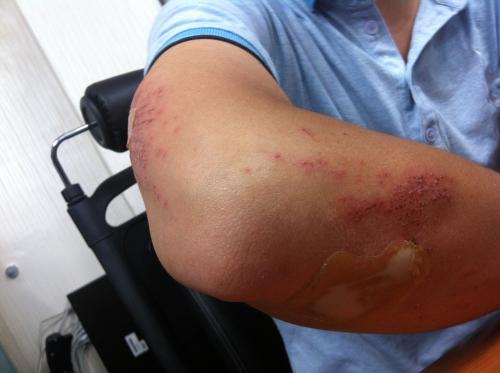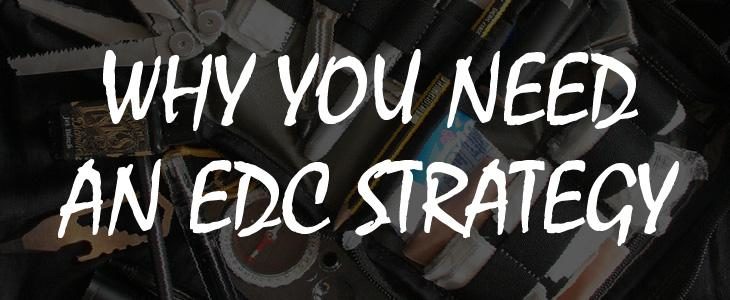I’m sure you’re familiar with the idea of everyday carry, but on the off-chance that you stumbled into this article all unawares, I’ll give you a brief overview. An everyday carry kit is a catch-all name for the items you never leave home without. For almost everybody that will mean phone, keys and wallet. Others will include a tool-kit, watch or weapon. The list is as varied and individual as the person doing the carrying.
The key to the best everyday carry kit for you is to match the items to the environment you expect to find yourself in and the circumstances that are most likely to come up for you. That means every day, not just in a bug out situation. You might not need a compass, for example, if you live and work in the city. And is a cellphone charger really on your list if you spend most of your time outdoors? This is where having a good Everyday Carry Strategy comes in.
Where do you live?
The first thing to ask yourself is whether you spend most of your time in the city. Sure, some of us do both. But if a commute isn’t part of your regular daily schedule then you should maybe focus your everyday carry around the area that you do spend your time.
If you’re city-based then you may not use a vehicle on a daily basis. This means that your everyday carry is just that – carried on your person. You’ll want to choose carefully and keep your selection as pared down as possible. Think about a lightweight Gerber Curve rather than a full sized multi-tool, for example, or a powerbank phone case over a standard one. If you set your mind to it you can come up with a kit that will be function in your regular daily life, not just in a SHTF situation.
If you spend your time in a rural or small town environment, chances are you’ll have a vehicle as a home base in your daily situation. This offers a good amount of opportunity for you to extend your kit past what you can comfortably carry on your person. I don’t mean a bug-out kit, but items like rope, a change of clothing or a first aid kit might be vital to your survival either in a major survival situation or during a more everyday crisis.
Climate will also have an impact on your strategy. Are temperatures where you live regularly sub-zero for a good part of the year? You’ll want a snow shovel and hatchet in your vehicle along with a top-quality fire starting kit – this is one item you don’t want to skimp on. If you routinely live with summer temperatures of over a hundred degrees, you’ll probably want to have water to hand. You’ll also need to be aware of spoilage, and inspect your gear regularly for heat damage.
The unique situation of your town or city is also worth thinking about when you make your everyday carry plan. Are attacks likely, or even expected, in your area? Do you pass through checkpoints where your items may be confiscated? This doesn’t mean you live in a military zone – it’s a consideration at schools and courthouses too, for example. No matter how useful a pocket knife is, there are situations where it’s best to keep it in your vehicle rather than on your person.
There’s also the more general political situation. Do you expect to be faced with civil unrest or a breakdown of law and order, even a temporary one? Finding a way to ensure your personal safety while also respecting the law will form a huge part of your strategy.
Where do you go?
The next question you need to ask yourself is where to go. Do you spend most of your day behind a desk or a counter, or are you based out of your truck? Is your workplace a controlled environment? Do you usually wear business dress or are you free to wear what you like? Do you have a uniform? If you’re restricted in your working day then you can work out a Plan B, such as treating your vehicle as your primary carry location, or having one strategy for work days and another for times that you’re free to follow your own inclinations.
Your workplace is the first thing to consider. A cable repairman will have very different considerations from a teacher, and a prison guard will have even more to think about. Some items – like open carry firearms, for example – may be entirely legal in your state but impractical in your personal situation. You may choose to carry on your commute but secure your weapon responsibly in your vehicle when you reach your workplace. This is something to think clearly about rather than drifting into; in other words, coming up with a strategy.
It’s possible that you spend your working day in a highly controlled environment such as a prison or airport. Under those circumstances, clearly you are very much restricted in what you can have on your person while you are there, but you also have other considerations to think about. Do you, for example, plan your everyday carry around what you keep in your vehicle and risk being out and about without the items you need? Or do you carry your kit on your person and have it locked away in a place where you can’t access it easily if SHTF? The decision can only be yours.
Another important consideration is the law. It’s a minefield. For example, in the city of Los Angeles it’s illegal to openly carry a blade more than three inches in length when you’re in public, but according to the state of California a blade of any length is legal so long as it’s carried openly. The open carry of firearms – with or without a license – is another area that can be either legal or illegal depending on your area’s specific laws.
The smart thing to do is to find out what’s legal – and illegal – in every area you’re likely to move within, and to respect that. You don’t need to create a problem that doesn’t have to exist.

What disasters and emergencies do you expect?
The next thing to think about is what you expect to be faced with in your personal situation. I’ll assume that you have a Bug Out Bag packed and ready, and that you have a Get Home Bag in your vehicle or workplace. Your everyday carry strategy should focus more on what you expect on a more immediate basis, both in your regular life and in a SHTF situation to get you to where you can put your longer term strategy into action.
Have you taken a step back to figure out what situation you might face? Do you live in tornado country, for example? Or are wildfires common in your area? You’ll need to give some thought to situations where you can’t go home for a while. Do you really want to live in the same socks for a prolonged period? Spare socks aren’t as glamorous as a compass, maybe, but they’re likely to be a lot more use to you unless you regularly hike in the wilderness.
Or maybe you’re more likely to be mugged than faced with a natural disaster. Think about how you choose to respond to having a young and erratic criminal demanding your possessions. This may be the exact situation where you’d rely on your weapon, but on the other hand there’s no shame in having a decoy wallet.
Another question to ask yourself is whether you spend the majority of your time alone or with other people. If you’re a teacher, a hardware store owner or a bus driver then the odds are good that you’ll have other people around when the unexpected happens. This has both positive and negative implications, but in most cases it will be easier to get by than facing an emergency alone.
If your vehicle breaks down during a wildfire outbreak how will you signal for help? What would you do if you dropped your keys in a dark car park and your cellphone is in your truck? If you come across an injured person while you’re walking your dog, would you have the resources to help them while you’re waiting for the ambulance to arrive? Most of us wouldn’t.
You can’t be prepared for every incident you might ever face, but some are much more likely than others. You can, however, make a reasonable estimation of what you’re likely to encounter. You don’t have to carry a first aid kit with you when you walk your dog, especially if you mostly walk past homes or businesses, but you might stuff a bandana in your pocket before you leave the house. It might never end up around a stranger’s injured shoulder, but it’s possible you’ll be glad of it if your dog cuts its paws on glass.
At its heart, being prepared involves thinking strategically and realistically about your situation.
What can you afford?
Once you’ve thought carefully about what you need, and weighted each item by importance, your next step is to plan your budget. Yep, believe it or not I’m suggesting that you have a strategy for your everyday carry budget as well as the kit itself. Bear with me – it does make sense.
Regardless of what’s in your wallet, it makes sense to balance your ideal kit’s cost against its potential usefulness. For example, I imagine that this compass would be very useful to a specialist, but for those of us who don’t hike more than once or twice a month – if even that often – it might make more sense to buy a budget one instead. The extra dollars can go towards something you really will make use of, like a good quality folding knife.
Of course, you should start with what you have. You have a watch and a cellphone, right? They’ll do the job until you’re in the position to replace them with the tools that will better fit your plan. Your first priority should be to meet your basic needs while you’re preparing to upgrade one item at a time.
It makes sense to plan the order you’ll upgrade your items in, the specs you need on each, and the amount you’re willing to spend. That way you’ll be much less likely to be seduced by brushed titanium or a multitool bracelet when what you really need is a first aid kit for your vehicle.
Conclusion
There are very many fine items designed for everyday carry – some, like the cellphone, will be carried by almost everybody, while others, such as a first aid kit, are worth the bulk for only a specific few with either a large capacity or more specific requirements.
If you’re sensible, you’ll choose quality and utility over the flash of this season’s popular item. Knowing what you’re likely to actually use will save you from dropping a bundle on a tool that might end up being too bulky to be practical for you. That doesn’t mean skimping on the best, but it does mean that you should figure out what the best means for you.
Sitting down to figure out your everyday carry strategy will help you to figure out which items are practical and necessary to your environment and lifestyle.
Once you’ve done that, you can go choose your gear!

